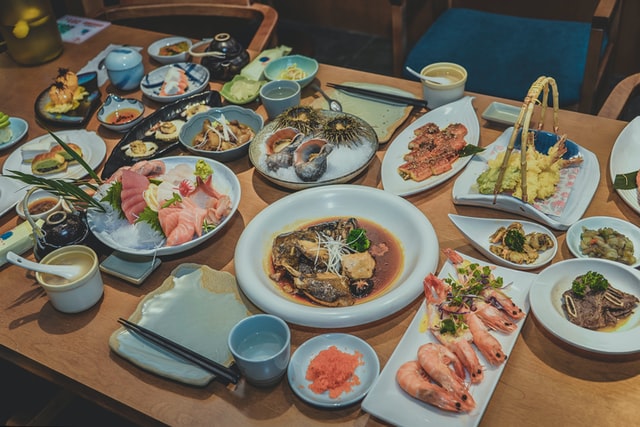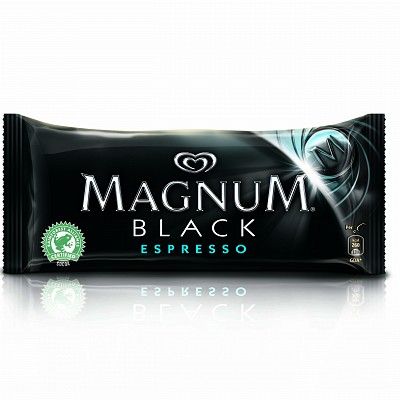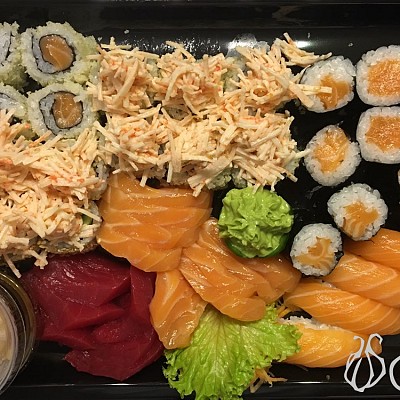Japanese cuisine has something to offer to pretty much everyone willing to taste its specialties. Foodies can never get enough of delightful Japanese dishes that can be found worldwide. But, for those who don't know much about this culinary heaven, we have prepared this simple guide called - Japanese cuisine for beginners.

The main ingredients used in Japanese cuisine
Those who love Japanese cuisine and their culture say that everything tastes better in Japan. The truth is that their dishes are versatile and rich in colors and flavors. Rarely will you see a Japanese dish looking blunt or boring. Most of their meals do contain meats of all sorts, but they are not considered the main ingredients of the national cuisine. Seafood is rather popular, and Japanese chefs are experienced in making all sorts of specialties that include raw or cooked fish.
Apart from rice, fish, eggs, and meat, here are the ingredients a beginner wanting to learn more about the food of Japan should know about:
- Rice vinegar - mild and slightly sweet, used for salads, in sushi, and many more combinations;
- Nori - this is a seaweed product made to be dried and paper-thin, used for wrapping sushi and adding crunch to salads and other dishes;
- Miso paste - a fermented soybean paste (with the addition of other grains) is used to prepare many dishes in Japan. Miso soup is the most famous one. Japanese people use it for dressings too. The strength of the paste varies just like its color does - the darker, the stronger.
- Noodles - the three main types are Soba, Ramen, and Udon. The first one is made from buckwheat and is usually eaten cold with dipping sauce or in warm noodle soup. Ramen is made of wheat flour and put in dishes with meat. Finally, Udon is a thicker type of wheat noodles served in hot soup.
- Dashi - soup stock used for adding rich flavor to every cooked dish.
- Tofu - a product made of soybeans and packed with proteins. It is the main ingredient of many salads and warm dishes where tofu melts and gives the dish a unique texture.
- Shiitake mushrooms - known for their strong and rich flavor, they are used in almost every Asian cuisine.
.jpg)
What are the staple dishes of Japanese cuisine beginners should know about?
Here are some of the most popular Japanese dishes you can taste in every part of their state and every single metropolis in the world. We guarantee you that after tasting a few, you will want to come here to stay. Trust us, you wouldn't be the first one.
Sushi
Sushi is the most famous Japanese specialty worldwide. However, people in Japan do not eat it as often as we may think. It is on their table every 2 to 3 weeks. But, since it has brought fame to Japanese cuisine all over the world, it is the first dish the beginners should learn something about.
Cooked rice seasoned with vinegar is the main ingredient of sushi dishes. It usually features fish, but that is not always the case. Japanese chefs have all the ingredients prepared in advance to combine them into delicious and decorative rolls. Avocado, cucumber, and pepper are just some of the vegetables they often add inside the sushi rolls. They serve them with soy sauce, irreplaceable wasabi, and pickled ginger. Of course, there are many variants of this dish, but this one is what you can find in almost every Japanese restaurant. Sushi is also a popular take-out option in Japan and all over the world.
Ramen
Ramen is one of the most affordable yet healthy dishes in Japan. This is the name they use to call their traditional soup packed with flavors and served in bowls. You can find the dish everywhere, and even though it is not really a snack, it is popular street food. Base ingredients can be soy sauce (which is, by the way, a bit sweeter and thicker than its Chinese version), pork bone soup, miso soup, etc. Every cook has his/her version of this traditional cooked meal. Some add mushrooms, meat, eggs, vegetables, tofu, spices, and whatever they need to make it filling. Noodles are a must too.
Sashimi
Sashimi is often confused with sushi, but the two have almost nothing in common. While you can make sushi without fish, the Japanese prepare sashimi with thin slices of raw fish or other seafood. Tuna and salmon are the most common choices Japanese chefs and cooks use for this dish.
.jpg)
Kushiyaki
Kushiyaki, also known as yakitori, is one of the Japanese classics. It is basically skewered chicken meat grilled over a charcoal fire. They use chicken thighs, wings, liver, or breast meat to prepare this dish and season it at the end. Grilled chicken skewers are usually served with beer or sake. Needles to say, this is one of Japanese favorite finger food.
Takoyaki
This name translates as grilled octopus, but the dish is a little bit more than that. It is made of pancake batter and pieces of octopus and fried to be crispy outside while soft and tender inside.
Sukiyaki
By now, you have probably noticed that dishes ending in yaki are the ones being grilled or fried. Well, this is not true for the sukiyaki dish. Meat slowly cooks with vegetables, mushrooms, noodles, and spices. This broth fondue is simmered at the table and served in a shallow pot. People usually share it as healthy outdoor food.
Okonomiyaki
Okonomiyaki is a Japanese version of a pancake you can make with whatever you want or have at the moment. Be that meat, fish, vegetables - all of those ingredients can be combined and grilled to make perfect okonomiyaki.
Mochi
The story about Japanese cuisine for beginners wouldn't be complete without a dessert at the end. For this guide, we have chosen mochi as one of the most famous Japanese treats. Mochi is made of a particular type of rice, sugar, water, and cornstarch. Even though the ingredients are relatively simple, the preparation process is not, so they usually consume this dessert around the Japanese New Year.
Those were just some of the facts that the guide called Japanese cuisine for beginners should include. Feel free to explore more, and let us know what you liked best!
.jpg)
Photos used:
https://unsplash.com/photos/EDGH8ypPDAw
https://unsplash.com/photos/Mp-S9z3tSyw
https://unsplash.com/photos/Pwcn31davYQ
https://unsplash.com/photos/jOFGlU-vpY8






































